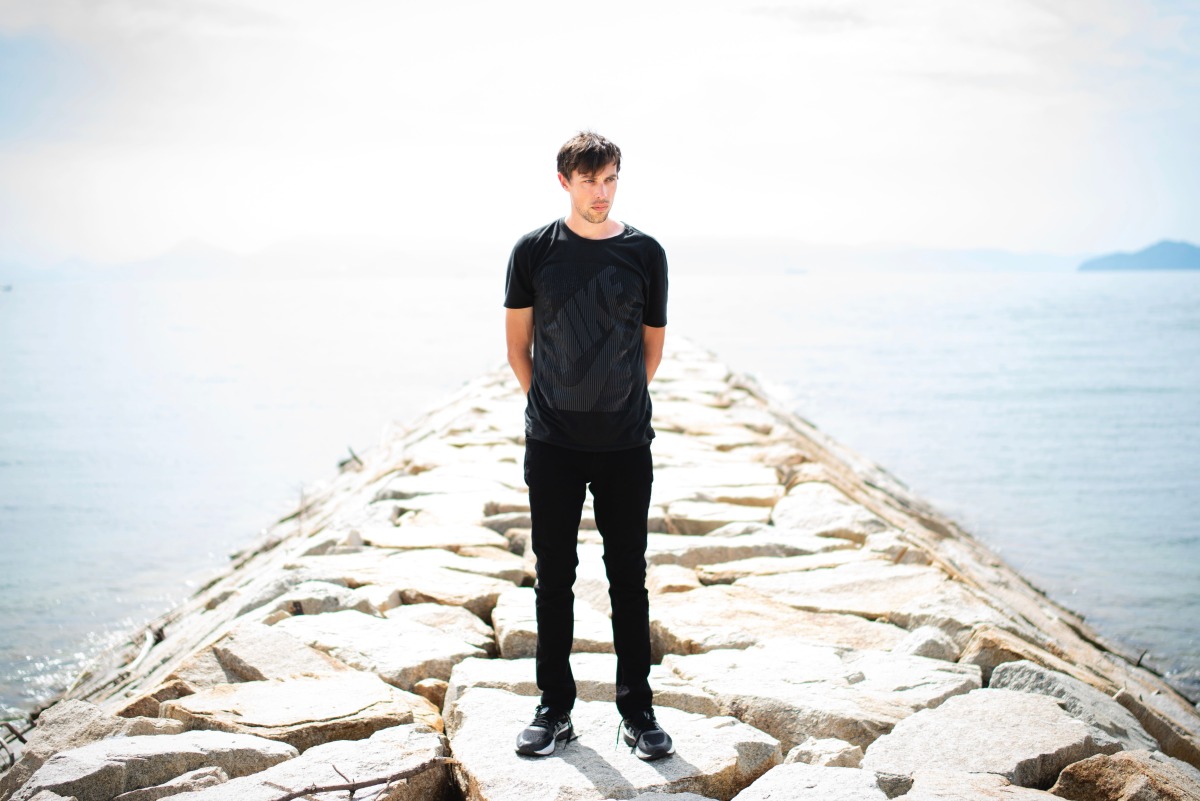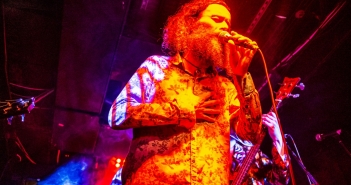The underlying theme of Canary is that of missed warnings and overcoming trauma. My mother lost her battle with cancer in 2016 and my son Noah was born asleep in 2020.
I’ve always been interested in the experience of extreme states of mind and body and even though these experiences were so painful, they were also deeply fascinating and have deepened my interest in the Big Questions, particularly what happens after this life ends; what is beyond the physical world that we experience through the senses.
Tracks such as Cascade evoke the terror and drama when the worst thing happens, and the trippy video that my friend Simon Blake gave me footage for – and Tom Schumann and I edited together – really convey something of the sense of being overwhelmed:
In a similar vein, How To Move Forward evokes a sense of the unfolding of a cataclysm, also with an undercurrent of war and conflict. The vocal samples are from ex-Navy Seal Jocko Willink and the video was cut together from authentic combat footage captured by Funker530 in Afghanistan:
In contrast, the album offers plenty of space for meditation and contemplation to explore the possibility of transcendence of the suffering of the world, with tracks such as Temple Gong drawing influence from my time spent in temples in Bangkok:
Similarly, Viññāṇa is inspired by meditation retreats in Sri Lanka and Wales, with hours spent ruminating on the fabric of reality as experienced through deep meditation and reflection; “what it means to be human” as podcaster and scientist Lex Fridman intones on the track.
Neuroscience has come a long way over the last hundred years, with the advent of brain scanning technologies such as fMRI and EEG etc, but the deepest questions still evade answering. The use of the combination of Thai traditional instruments alongside modern electronic production values is intended to musically capture a sense of the old and the new, Viññāṇa being the Pali Buddhist word typically translated as ‘consciousness’.
Album opener Sleeping Meadow sets the scene for a series of dreams with some echoing, sea like sounds and a quote from the Swiss godfather of psychoanalysis Carl Jung, “my relationship to reality was not particularly brilliant“. I’ve always been a dreamer and a bit away with the faeries, and Sleeping Meadow hints at a youthful, pastoral naivety.
Shortest Day is based on samples from an improvisation that I did back at the family home in 2013 when I was seeking to capture something of the strange ambience of our home. My mother was a computer engineer in the 1980s, so our house was full of strange computers that ran games on cassettes. It’s a paean to childhood and the dawn of the era of computing.
Vimutti and When I Leave My Body are collaborations with my dear friend, the German violinist and producer Alex Stolze.
The rest of the Canary tracks I self-produced in collaboration with Mike Bannard at Safehouse studios in Oxford and percussionist and producer Greig Stewart. I really value having their input, I think it can get very insular producing at home and I definitely have my weaknesses in terms of production, especially with drums and percussion.
So, having Greig and Mike to feed into the final refinement process was essential. Alex’s violin parts were taken from some recording that he did for a film project that I’m working on. I took the parts and cut them over a beat that I had in progress, Alex helped with the production and I’m really proud of the result.
Some of the wonky synth parts are taken from my Yamaha DX21 that I’ve had for around twenty years. I’m finally living somewhere where I can have my synths and toys set up and it’s a joy to reacquaint myself with these old friends. Thematically, When I Leave My Body is inspired by the notion of Out of Body Experiences and Robert Monroe was a pioneering researcher in the field. Again, I’m probing the question of what lies beyond this world:
Vimutti is the Pali Buddhist word for freedom. I was crafting the track for a few years, and it came out of the last couple of years before my mother passed away. On reflection her passing was inevitable but at the time we still clung on to some hope that she would beat the cancer that had taken hold. What does freedom really mean, in the face of the inevitable, cruel suffering of our existence?
Somewhere between the tumult and cacophony of tracks such as Cascade and the meditative calm of Temple Gong is Fetus. Also featuring the Thai Gong Circle, Fetus was directly inspired by Noah’s birth and passing, and was composed directly after it happened; art therapy in the true sense.
Balancing a sense of melodrama with deep contemplation, I’m really proud of it, and very grateful to Jonathan Ouin from the band Stornoway who beautifully replayed the main melody lines on cello and Cornish singer Sarah Tresidder who I sampled for the track. Adrienne from Neon Dance helped me put together this ace video for the track, which, similarly to the clip for Cascade, captures the feeling of being overwhelmed:
A reference to the canary in the coalmine as a warning of encroaching threat, the penultimate title track features an extract from a speech by John F. Kennedy where he outlines the dangers of secret societies, apt that within years Kennedy was allegedly murdered by the very institution charged with his protection.
This is also taken as symbolic for one’s own mind, the failure to perceive threats, and the fact that those threats can come from one’s own psychological systems designed for self-preservation.
Unlike the rest of the album tracks, which are Ableton Live productions with to the grid beats, Canary is a free-flowing ambient piece, based on the electronic part, with my friends Greig Stewart and clarinettist Rachel Coombes improvising in the studio. It’s a nice contrast to all the electronica tracks to have something that’s more fluid and organic. Having live musicians to work with in the studio is something that I’d like to explore more in future.
As referenced throughout the album, the final track The Afterlife optimistically gestures at the notion of peace and relief in the transcending of our mortal coil. Here’s hoping!




